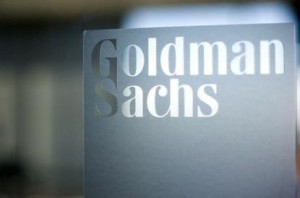In Defense of Goldman Sachs (Yes, Really)
It may be Stockholm syndrome, but I do think some of the criticism of Goldman Sachs regarding its subprime deals is overblown. I don’t deny that there have been apparent violations of the securities laws in terms of disclosures, but the central issue that upset Senator Levin and Matt Taibbi so much has not seemed to be the disclosure violations, which have the air of “technicalities” about them. Their major criticism seems to be that Goldman Sachs was selling synthetic mortgage CDOs despite the fact that the firm was perfectly aware that the securities would inevitably blow up. However, I think this is the least troubling aspect of Goldman Sachs’s subprime dealings, and not even worth making a rule against.
 Senator Levin’s constant refrain in the Congressional hearings on Goldman Sachs’s last year was that Goldman Sachs was selling securities that it was secretly betting against. Specifically, he charged that the bank issued synthetic CDOs to clients without disclosing that Goldman Sachs was retaining a short position on the subprime mortgage market because it believed the securities to be a time bomb that it wanted off its books as soon as possible.
Senator Levin’s constant refrain in the Congressional hearings on Goldman Sachs’s last year was that Goldman Sachs was selling securities that it was secretly betting against. Specifically, he charged that the bank issued synthetic CDOs to clients without disclosing that Goldman Sachs was retaining a short position on the subprime mortgage market because it believed the securities to be a time bomb that it wanted off its books as soon as possible.
I do not find this a disturbing revelation in any way. As a value investor, and really, as any kind of investor, I consider it the fundamental prerogative of any market participants to make the bets they believe will produce a profit. Nor do I consider it necessary, or even productive, for market participants to have to disclose their investment thesis to the counterparties. The basic model of financial markets is (more or less) willing buyers and willing sellers coming together and trading at a price they have agreed on. This freedom to take positions is central to the functioning of financial markets (and that is why I found it so troubling that former SEC chairman Cox decided to outlaw short selling in financial stocks during the subprime crisis).
Here, Goldman Sachs is being criticized for having a view on the subprime market, which happened to be a correct one, and for keeping that view to itself in constructing these subprime deals. However, Goldman Sachs’s view was only that: a view, an opinion. The people who bought these deals had access to the same information that Goldman Sachs did, and reached the opposite conclusion, or at least concluded that the interest received in the deal compensated them for the risk. The key point, in my view, is that a participant’s opinion alone does not affect the future performance of the deal, and therefore there is no need to disclose it. After all, I don’t disclose my investment thesis to the people I buy stock from (and in fact I couldn’t because the impersonal nature of brokerages and exchanges means that I don’t even know who they are).
However, buying and selling stocks on the secondary market is perhaps not the same as being a bank that sponsors a synthetic CDO. The latter is required to disclose the material facts relating to the issue. The question, then, is whether Goldman Sachs’s opinion of the subprime market, which it has chosen to express by wanting to be short, is a material fact. The question of what is a material fact is specific to the circumstances. The general formulation is that a material fact is any fact where there is a substantial likelihood that the fact, if disclosed, would assume actual significance in the purchaser’s decision to buy or not.
As I stated above, the mere market view of Goldman Sachs is an opinion, not a fact. This opinion alone cannot affect the future performance of the deal, or allow the firm to reap profits from the purchaser in a manner that has not been previously disclosed. As a result, even if the existence of Goldman Sachs’s opinion is considered a fact, it would not qualify as a material one.
 But Goldman Sachs did more than develop an opinion and keep quiet about it. Goldman Sachs sought to express that opinion with a short. The Hudson and Timberwolf deals seem to be, in essence, an attempt by Goldman Sachs to clear the credit risk of its long positions in subprime mortgages by transferring the risk to whoever would be persuaded to take it on. Now, of course Goldman Sachs could offloaded the risks with credit default swaps without creating a synthetic CDO, as the market at the time was not completely frozen. But the successful issuance of a synthetic CDO has the same risk transference effect but also allows for management fees.
But Goldman Sachs did more than develop an opinion and keep quiet about it. Goldman Sachs sought to express that opinion with a short. The Hudson and Timberwolf deals seem to be, in essence, an attempt by Goldman Sachs to clear the credit risk of its long positions in subprime mortgages by transferring the risk to whoever would be persuaded to take it on. Now, of course Goldman Sachs could offloaded the risks with credit default swaps without creating a synthetic CDO, as the market at the time was not completely frozen. But the successful issuance of a synthetic CDO has the same risk transference effect but also allows for management fees.
A synthetic CDO is made of a basket of credit default swaps whereby the buyers of the deal receive a fixed payment in exchange for guaranteeing the underlying securities against default. In the event of default, they are required to pay the difference between the defaulted value and the face value. Obviously, as with all derivatives, a credit default swap requires a counterparty to take the other side of the deal.
In other words, any parties to a derivative knows that somewhere out there on Wall Street there is someone who stands to make all the money that they will lose, and vice versa. And, in fact, in the case of the infamous Hudson and Timberwolf deals, the buyers knew who that party was: it was Goldman Sachs. The standard structure of a credit default swap, according to the standard fixed income reference guide, the very useful Handbook of Fixed Income Securities, is that the bank that sponsors the deal is the protection buyer, and this arrangement was disclosed in the Hudson and Timberwolf offering documents. Thus, the purchasers of these deals knew that Goldman Sachs was short. As for the reasons that Goldman Sachs wanted to be short, or if it had seen the need to take any steps to offset the short position, that brings us back into opinion-land.
I do not mean to suggest that Goldman Sachs was completely blameless in these deals; it described the Hudson deal as not a balance sheet transaction when it was a textbook balance sheet transaction, an attempt to transfer credit risk assets that Goldman held. It also described the Hudson assets as being sourced “from the Street,” which the company lamely defended by pointing out that Goldman Sachs was part of the Street. And of course there was the Abacus deal, where the plan’s asset manager was described as independent when in fact he was being advised by John Paulson.
What depresses me about the whole synthetic CDO business is not so much that Goldman Sachs has such cynical but talented salesmen, but that the buyers of these complicated instruments seem to have learned nothing . I may be lacking in sympathy for the buyers of these deals because any student of recent history could have seen this game being played over and over. In Frank Partnoy’s book Fiasco: The Inside Story of a Wall Street Trader, which details the author’s experiences in structured finance at Morgan Stanley and which should be required reading for anyone who still has any lingering trust of Wall Street, he describes the same situation, the gaming of the ratings agencies’ ratings, the buyers who were less sophisticated than their sellers and were either unwilling or unable to make an independent assessment of the offering documents and who were willing to assume, for example, that particular AAA structured note paid a yield spread over a vanilla security of a similar credit rating because the issuers and underwriters were incompetent, not because the issue had an embedded short option position on the Mexican peso.
Of course, when I say people have learned nothing, I don’t mean literally nothing. The people who have now acquired firsthand knowledge of the dangers of leverage and shorting volatility are the ones who have been escorted from Wall Street in disgrace (imagine being the one who recommended buying the Abacus deal in a job interview). I recall reading somewhere that the majority of people working on Wall Street now were not even present during the dot-com collapse. Perhaps Nassim Taleb is right; the best qualification in this world is grey hair.
At any rate, the enduring rule that has come from subprime mortgage securities debacle (and the structured finance debacle, and the junk bond debacle, and the Latin American debt debacle) is caveat emptor. (And the second rule, obviously, is not to play with borrowed money). It seems to me that all the disclosure laws and ratings agency opinions in the world cannot serve to erase the necessity of adopting a skeptical, defensive attitude towards any financial products and the people who sell them. If market participants would remember that, we would have no reason to excoriate Goldman Sachs for doing what we all wish we had the sense to do.
I can’t say I agree at all. Goldman was like a used car salesman who sells a car which has a crack in the frame that would be very difficult to discover initially but which would likely eventually expand at highway speeds and eventually cause the car to crash.
Goldman did not have a mere “opinion” or “investment theory.” It was aware of material facts which it concealed or lied about and conspired with ratings agencies to defraud the investors. Or at least those are the allegations and Goldman can have its day in court.